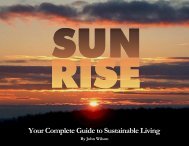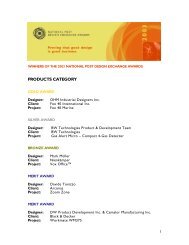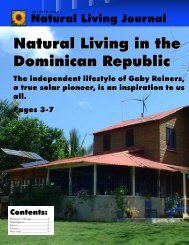Volume 3 - Program & Project Ideas (PDF - 4.5 - Natural Life Network
Volume 3 - Program & Project Ideas (PDF - 4.5 - Natural Life Network
Volume 3 - Program & Project Ideas (PDF - 4.5 - Natural Life Network
You also want an ePaper? Increase the reach of your titles
YUMPU automatically turns print PDFs into web optimized ePapers that Google loves.
<strong>Natural</strong> Resources Canada – Community Energy Systems<br />
ALTERNATIVE ENERGY SUPPLY OPPORTUNITIES<br />
(See also the buildings, land use and transportation sections.)<br />
Renewable energy systems use resources that are constantly replaced and are usually less<br />
polluting than fossil fuels. For the purposes of sustainability, these resources never run<br />
out. Examples of renewable energy systems include solar, wind, and geothermal energy<br />
(energy from the heat in the earth). We also get renewable energy from trees and plants,<br />
rivers, and even garbage.<br />
Resources: http://www.newenergy.org/links.html.<br />
http://www.sustainable.doe.gov/municipal/sstoc.shtml This provides good case studies on<br />
alternative energy supply from the US.<br />
A.1 Cogeneration<br />
Generation of electricity has traditionally been undertaken using the Rankine<br />
thermodynamic cycle (see below), and often with steam as the generating medium.<br />
Overall electrical generating system efficiency lies between 30 and 36 per cent depending<br />
on the fuel and other factors. Even with the use of gas turbines and supplementary steam<br />
generation, barely 50 per cent of the input fuel creates electricity. The remaining energy<br />
is rejected to the atmosphere or to a nearby water source.<br />
Modern thinking makes use of the reject heat, possibly for space heating, and thereby<br />
reduces the fossil fuel requirements that would otherwise have been required for that<br />
heating purpose. The process of efficient generation of electricity followed by the use of<br />
reject heat is known as cogeneration or Combined Heat and Power and is fast becoming<br />
the starting point for community energy or district heating systems. Through the use of<br />
both electricity and heat, efficiencies of up to 85% are possible.<br />
Draft 4/11/2005 107






